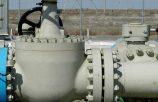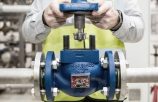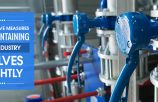5 Best Practices To Control Systematic Water Level In The Storage Areas
 secureluokai
secureluokai
 April 12, 2017
April 12, 2017

Water plays an essential role in our whole being, thus efforts must be made to control the systematic water level and conserve and distribute water effectively. It is needless to say that water has been overused and the water resources are exploited to a large extent, so much so that there are chances of the scarcity of water in a number of areas in the world in near future.
In this context, just building water tanks at a frequent interval in relevant areas is not enough. It is necessary to use the right kind of technology so as to predict the requirement of water in the area at the point of time and fill the tank as well as distribute accordingly. The properly engineered system needs to be incorporated for the same.
There are some of the best practices for the purpose of controlling the systematic water level in the storage areas and water tanks. Most of these practices make use of the different kinds of valves available in the markets. Each of these valves has a specific function, area of installation as well as the mode of action. Thus, the valves should be chosen wisely and incorporated in the right area for the desired results. This will, in turn, help to have the desired level of water during the high and low peak periods in the storage areas.
Why is regulation of water in storage areas essential?
It is not just enough to store large amounts of water in the storage areas for use; storing the right amount of water at the right time is what makes the storing process effective. If less water is stored during the high demand period, it could lead to a big issue as the requirements are not met appropriately. Whereas on the other hand, if a large quantity of water is stored for the long duration of time, say when the demand for water is less, then it might get contaminated eventually. This, in turn, might lead to a number of health issues and chronic diseases.
Storing the right quantity of water at the right time so that the requirements are met, along with the quality of water being maintained is also necessary. To help you here, we have listed a few safe practices in order to supply hygienic and desired amount of water below:
Using the water pressure relief valve
This is a kind of valve which is used to regulate the water level in a storage area, taking into account the water pressure in the tank. This valve is generally placed on the pipes and it measures the water pressure. When the water pressure goes high, the water enters the globe styled body and reaches the regulator. The rise in the pressure pushes the diaphragm and the inlet valve is closed preventing further entry of water.
This kind of water pressure relief valve is the first checkpoint for water regulation in a storage area. It is appropriately said that this type of valve works wonders under pressure, in the literal sense of the term.
Leave it on the check valves
The check valves are extremely essential and these valves tend to perform well even when there is no one around. The basic idea about this valve is to maintain a unidirectional flow of water. They do not require any electric supply, water pressure or anything else to work. It simply ensures that the water does not flow back into the motor or the pipe and prevent the whole setup from getting ruined. Check valves are available in many different sizes and can be incorporated in even the smallest and coziest water storage areas.
Maintain the altitude
Maintaining the height of the water storage system will also help in maintaining the water flow and the water level in the storage tank. The higher the storage tank, the better is the flow. However, this does not necessarily mean that it must be kept very high. Keeping the water storage facility too high might lead to inconvenience in cleaning and other maintenance purposes.
Liquid control valve is helpful
A liquid control valve is specially designed to maintain the flow in a storage area. The flow can be maintained at a constant level throughout and any changes in the flow can be noted immediately for further action with the use of these valves. There are two-way and one-way liquid control valves available these days.
In one-way, the valve is placed at the inlet and as soon as the storage area is completely full, the valve closes itself, not allowing any further inflow of water. On the other hand, in a two-way system, the inlet liquid control valve allows the water to flow into the storage facility and once that is done the outlet valve which was closed during this time automatically opens up to distributes the water to the desired points.
Checking the water level
The water level in the storage tank can also be measured and determined using the water check valves. This determines the amount of water left in the area and the amount that the storage tank can take up still. This is a simple yet useful valve for the purpose of controlling the systematic water level in the storage areas.
There are some similar pressure-regulating valves that help to maintain a constant water pressure or regulate the water level at the low and high peak periods and maintain the constant water supply to the relevant areas.
Wrapping Up
For years together water has been extensively misused and now there are threats of the water crisis in the future. So, it is extremely important to implement certain worthwhile strategies to conserve, store, and distribute water in the various areas in a judicious manner. The future generation looks up to the current generation. Life without water is impossible and so more caution should be taken when handling water and deciding on its storage and use. For more information about various valves specifically required for your business, Contact Flowspec and we will be happy to answer your questions and give you all the details you need.




